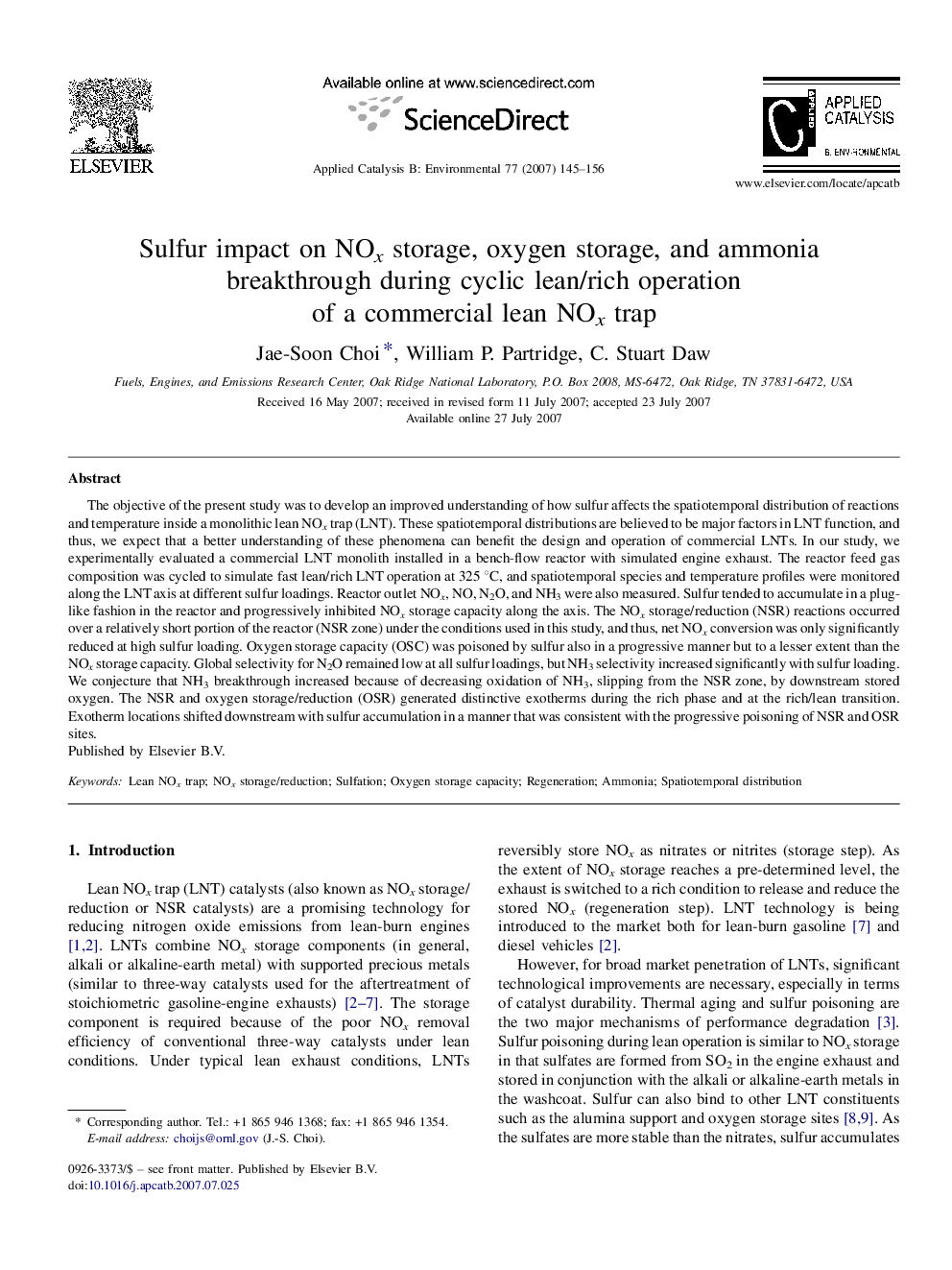| کد مقاله | کد نشریه | سال انتشار | مقاله انگلیسی | نسخه تمام متن |
|---|---|---|---|---|
| 48646 | 46516 | 2007 | 12 صفحه PDF | دانلود رایگان |

The objective of the present study was to develop an improved understanding of how sulfur affects the spatiotemporal distribution of reactions and temperature inside a monolithic lean NOx trap (LNT). These spatiotemporal distributions are believed to be major factors in LNT function, and thus, we expect that a better understanding of these phenomena can benefit the design and operation of commercial LNTs. In our study, we experimentally evaluated a commercial LNT monolith installed in a bench-flow reactor with simulated engine exhaust. The reactor feed gas composition was cycled to simulate fast lean/rich LNT operation at 325 °C, and spatiotemporal species and temperature profiles were monitored along the LNT axis at different sulfur loadings. Reactor outlet NOx, NO, N2O, and NH3 were also measured. Sulfur tended to accumulate in a plug-like fashion in the reactor and progressively inhibited NOx storage capacity along the axis. The NOx storage/reduction (NSR) reactions occurred over a relatively short portion of the reactor (NSR zone) under the conditions used in this study, and thus, net NOx conversion was only significantly reduced at high sulfur loading. Oxygen storage capacity (OSC) was poisoned by sulfur also in a progressive manner but to a lesser extent than the NOx storage capacity. Global selectivity for N2O remained low at all sulfur loadings, but NH3 selectivity increased significantly with sulfur loading. We conjecture that NH3 breakthrough increased because of decreasing oxidation of NH3, slipping from the NSR zone, by downstream stored oxygen. The NSR and oxygen storage/reduction (OSR) generated distinctive exotherms during the rich phase and at the rich/lean transition. Exotherm locations shifted downstream with sulfur accumulation in a manner that was consistent with the progressive poisoning of NSR and OSR sites.
Journal: Applied Catalysis B: Environmental - Volume 77, Issues 1–2, 30 November 2007, Pages 145–156